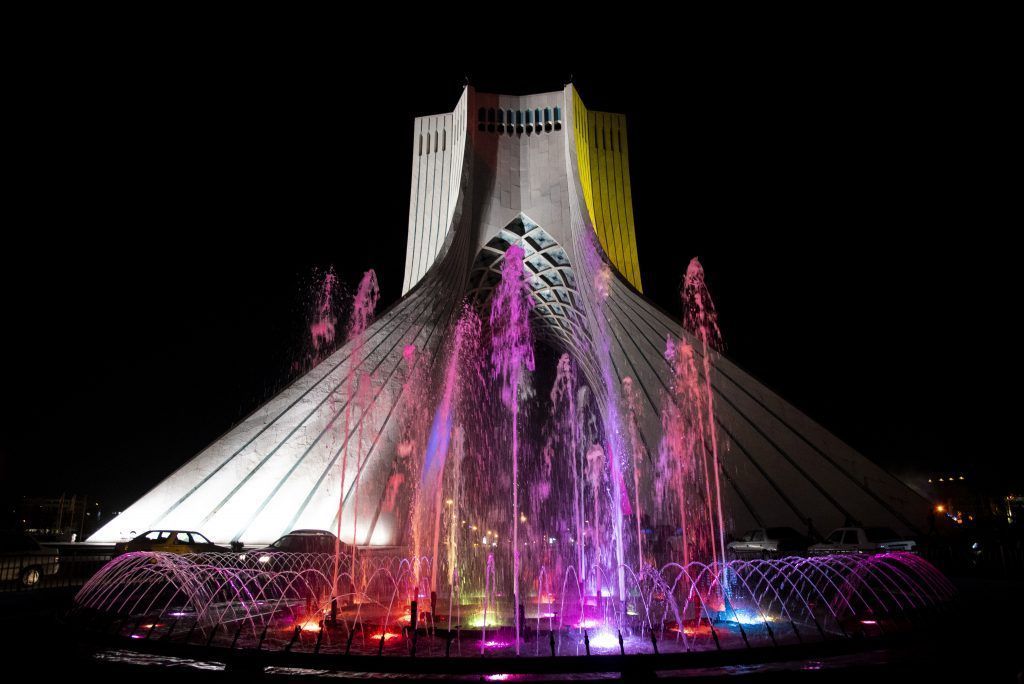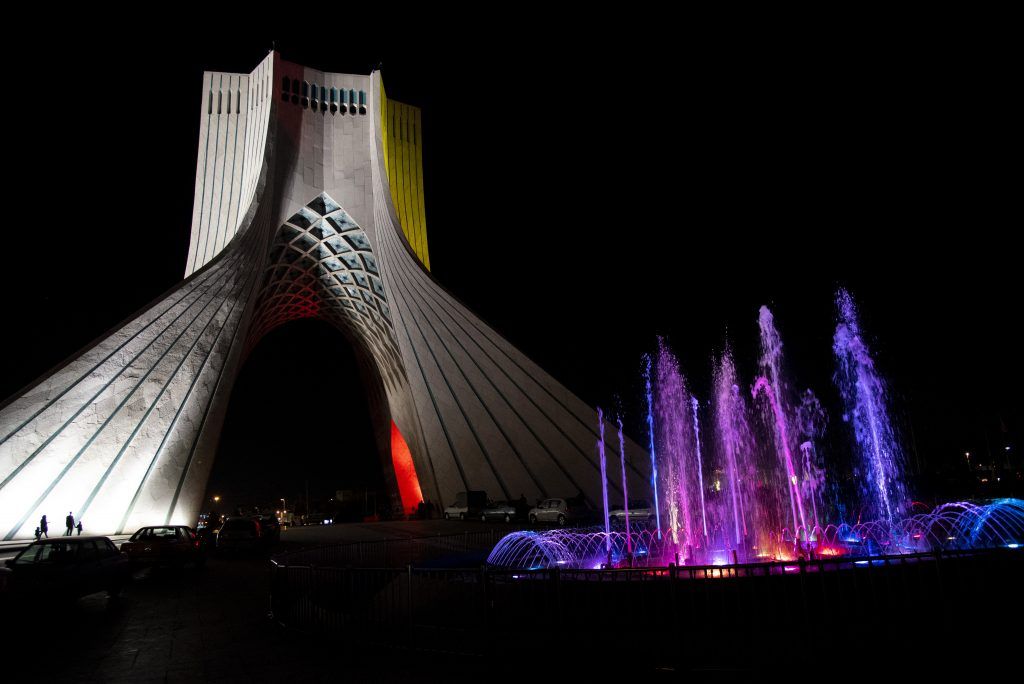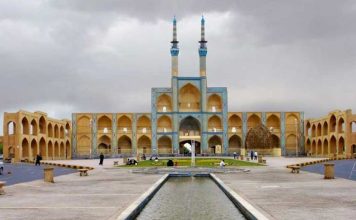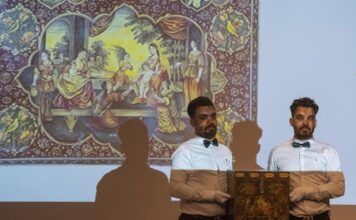By Kayhan Life Staff
The Azadi Tower (formerly known as Shahyad Tower), one of Tehran’s iconic landmarks, has been damaged by sound waves and vibrations during a cannon (artillery) firing ceremony (8-gun salute) to mark the Iranian new year, Nowruz, on March 20, the Iranian Students News Agency (ISNA) reported.
According to ISNA, this was the first time in 80 years that the Tehran City Council had marked the arrival of a new century with a ceremonial canon salute in the capital.
“People living in Tehran’s west side and within a radius of a few kilometers from the tower could hear the loud sound and vibrations of the war cannons, which made many residents fear that the structure could have been damaged,” ISNA said. “Many people have questioned the rationale behind holding the cannon firing ceremony near a national heritage site.”
[aesop_image img=”https://kayhanlife.com/wp-content/uploads/2021/03/برج-شهیاد-1.jpg” panorama=”off” credit=”Damages are seen in these images. Kayhan London./ ” align=”center” lightbox=”off” captionsrc=”custom” captionposition=”left” revealfx=”off” overlay_revealfx=”off”]
“Were the experts at the Iran Cultural Heritage, Handicraft and Tourism Organization (ICHHTO) consulted beforehand? There have been discussions on listing the tower as a modern architectural heritage site,” the report added.
“The 23rd Division of the Army’s Ground Forces held a ceremonial firing of cannons next to the Azadi Tower to mark the year 1400,” a tweet by the Iranian Judiciary’s online Mizan news agency said.
The four accompanying photographs to the tweet showed the firing ceremony taking place next to the tower.
Footage published by the Tehran-based Young Journalists Club (YJC) showed soldiers firing ceremonial cannons a few meters away from the structure. In the video clip, an announcer tells the crowd gathered around the tower to cover their ears.
The 23rd Division of the Army’s Ground Forces reportedly fired eight cannons. The artillery’s sound waves and vibrations damaged parts of the building.
Images posted in a tweet by @_loren_93 supposedly show cracks in the structure caused by the cannon’s sound waves and vibrations.
“They are destroying the Tower, which was the only thing left of Azadi [freedom],” the tweet said.
In an interview with ISNA on March 28, the Azadi Cultural Complex director, Hamid Khakbaz, said: “A ceremony was held at the Azadi Tower to mark the new year. The Azadi Complex’s cultural office, which operates under the Roudaki Foundation’s auspices, was not consulted in advance. We knew nothing about the event.”
On the same day, the Tehran-based Doniya-e-Eghtesad newspaper posted several photographs that reportedly showed cracks near windows on the west side of the tower.
“We can see the damage caused by the cannon’s sound waves and vibrations following the new year celebrations,” Doniya-e-Eghtesad said. “There are also new cracks on the level right below the roof of the tower. Several reporters visited the building on an invitation from the Azadi Tower’s management, who believe the cannon’s loud sound and vibrations could have caused the new cracks in the tower. Most of the cracks are near windows on the west side of the tower where the cannons were placed.”
“According to the tour guide for the top floor of the tower, the cracks appeared near three windows after the ceremony,” the report added. “The tower has been closed to the public since March 20, according to the management of the Azadi Tower.”
So far, no officials from the Tehran City Council and the ICHHTO have commented on the incident. The city and ICHHTO have neglected the Azadi Tower. Humidity and dampness have damaged the structure through the years.
The firing of cannons to mark the new year in Iran dates back to the Qajar dynasty (1789-1935), mainly to Naser al-Din Shah’s reign (1848-1896). It was the best way to inform the population of a city of the new year’s arrival. The Islamic Republic has used the ceremony as propaganda to showcase its military might.
Azadi Tower is part of the Azadi Cultural Complex, which includes an underground museum. The tower, one of Tehran’s iconic landmarks, is 45 meters high (48 feet) and covered with white-cut marble. The late Mohammad Reza Shah Pahlavi commissioned the tower to mark the 2,500-year celebration of the Persian Empire, which took place in October 1971.
Iranian architect Hossein Amanat (born in 1942) designed the tower.
“Overall, the building starts from the base and moves up towards the sky.” Mr. Amanat said in an interview with the BBC World Service. “The main vault is a Sassanid arch [Sassanian Empire 224 and 651 AD.] representing the classical era, while the broken arch above it is a popular medieval form of arch representing the post-classical era. The ‘network of ribs,’ which connects the arches, would represent the connection between classical and post-classical Iran.”
A survey by the Iranian Students Polling Agency (ISPA) in 2019 showed that 53 percent of Iranians consider the Azadi (Shahyad) Tower as the symbol of the capital Tehran.
This article was translated and adapted from Persian by Fardine Hamidi.








